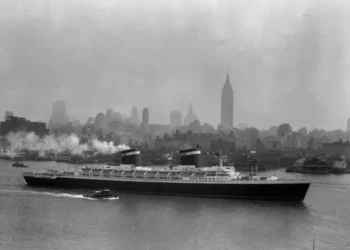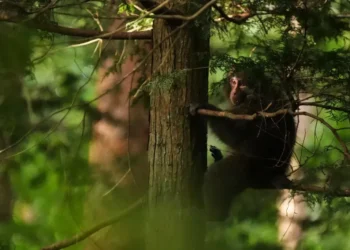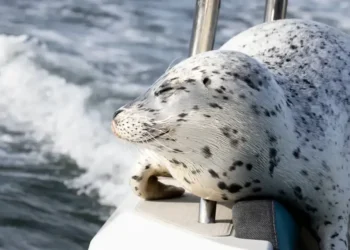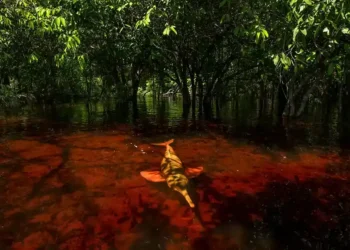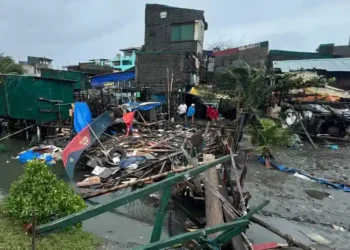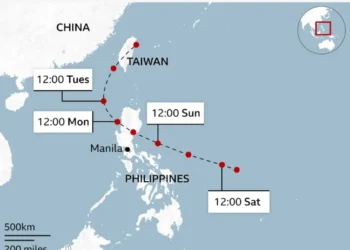Photos Reveal Switzerland’s Disappearing Glaciers — and a Climate Wake-Up Call
Rhone Glacier, Switzerland — The once-mighty rivers of ice carving through Switzerland’s Alps are melting fast, and the evidence is both striking and sobering. From new crevasses and collapsing ice shelves to entire villages at risk, Switzerland’s glaciers are sending a clear message: the climate crisis is no longer a distant threat — it’s here.
Glaciologist Matthias Huss calls glaciers “the ambassadors of climate change,” and standing atop the sun-soaked Rhone Glacier — which feeds the famous river flowing through Switzerland and France — it’s easy to see why. As the ice slushes and drips beneath his feet, Huss drills deep into the glacier to track how fast it’s disappearing. The answer? Too fast.
A Race Against the Melt
Switzerland is home to roughly 1,400 glaciers, making it the glacier capital of continental Europe. These icy reservoirs provide more than scenic beauty — they supply drinking water, irrigate crops (including the vineyards of France), and fuel hydroelectric plants that power most of the country.
But climate change has already claimed an estimated 1,000 smaller glaciers, and the larger ones are not far behind. In some areas, scientists are turning to extreme methods like wrapping glaciers in giant thermal blankets in a desperate attempt to slow the melt.
“We’re seeing things we didn’t even expect,” said Huss, who leads the GLAMOS glacier monitoring group at ETH Zurich. One alarming trend? Glaciers are now melting not just from the top — due to sun and warm air — but also from below, as wind and air currents hollow out the ice from within. “Some of these air channels are carving out massive cavities beneath the surface,” he explained. “When the roof collapses, it’s dangerous and unpredictable.”
Climate Change You Can See
Glaciers are often romanticized — picture-postcard symbols of alpine beauty. But Huss says that makes them powerful messengers. “People know glaciers from holidays, from memories,” he said. “They’re beautiful, but now they’re vanishing — and that makes climate change more real for people.”
The bigger picture is even more troubling. Scientists estimate that up to two-thirds of the world’s glaciers could vanish by the end of the century unless carbon emissions are drastically reduced.
Huss is clear: the only way to save the glaciers is to cut CO2 emissions. “Blankets and drills might buy us time,” he said, “but the real solution is emissions reduction. Everyone has a role to play.”
When Glaciers Turn Dangerous
That urgency became all too real in May, when the Swiss mountain village of Blatten was nearly wiped out by a massive landslide. The culprit? A rare advancing glacier.
Unlike most of its retreating cousins, the Birch Glacier had been rapidly surging forward. Just before the collapse, it was moving at about 10 meters — over 30 feet — per day. Huss called that speed “completely unsustainable.”
Although villagers had been evacuated ahead of time, the slide destroyed dozens of buildings, leaving only a few rooftops visible. Data later showed that rocks had piled up on the advancing glacier, triggering the deadly slide. Huss said this combination of advancing ice and external pressure created a perfect storm — one no one predicted.
“Three weeks ago, nobody could have imagined the entire village would be gone,” he said. “That’s the biggest lesson: the unexpected can — and will — happen. And we need to be ready.”
The Takeaway: It’s Time to Act
From breathtaking beauty to catastrophic collapse, Switzerland’s glaciers are at a tipping point — and they’re making it harder to ignore the urgency of climate change.
“These glaciers won’t be saved overnight,” said Huss, “but the choices we make now will determine whether they’re around for future generations. We can still act — and we must.”
This article was rewritten by JournosNews.com based on verified reporting from trusted sources. The content has been independently reviewed, fact-checked, and edited for accuracy, neutrality, tone, and global readability in accordance with Google News and AdSense standards.
All opinions, quotes, or statements from contributors, experts, or sourced organizations do not necessarily reflect the views of JournosNews.com. JournosNews.com maintains full editorial independence from any external funders, sponsors, or organizations.
Stay informed with JournosNews.com — your trusted source for verified global reporting and in-depth analysis. Follow us on Google News, BlueSky, and X for real-time updates.


